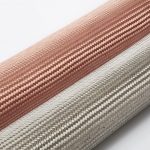
How Does The Application Of Nickel Plating Work?
Nickel plating application is a metal coating process that involves electroplating nickel onto the surface of another object to either shield it (from corrosion or EMI), resurface it after wear, or to add new qualities like a decorative finish or electrical conductivity. This article will explore how and why this process works.
Nickel can be used as a plating material on just about any surface, from today’s innovative plastics to traditional metal surfaces. In electroplating, technicians use an electric current to oxidize the metal flakes and salts that will then coat the product or part. Another option is an autocatalytic reaction that’s called “electroless.
Why Apply Nickel Plating?
Nickel Plating is done for several reasons, including:
- Strengthening metals against rust and other forms of corrosion
- Protecting lightweight plastics from wear and tear
- Adding aesthetic value to a dull appearance
- Increasing the hardness of the underlying surface
- Adding resistance for alkaline environments
- RFI/EMI shielding
Nickel plating is also a powerful option for aerospace and defense engineers looking to prevent atmospheric corrosion. A zinc-nickel coating acts as a “sacrificial layer” that absorbs the corrosive materials before they can get through the aircraft or other machinery, and potentially weaken it structurally.
Aerospace and defense nickel plating applications include:
- Increases corrosion resistance
- Enhances wear and tear for aircraft and defense equipment
- Restores original dimensions on parts that have been worn down or refurbished
- Provides a lubricating surface with increased chemical resistance
- When combined with copper, it can provide excellent electromagnetic interference (EMI) shielding
Nickel-based coatings are increasingly used in aerospace applications for their excellent adhesion, corrosion protection, hardness, wear, and erosion resistance. These properties make nickel a necessary coating in the high-performance world of aviation. Its use is not limited to simple components; it extends into complex assemblies such as engine parts with precise tolerances that must be protected from environmental hazards while maximizing strength and efficiency.
The Application of Nickel Plating
Nickel plating is the application of a nickel coating onto a surface by means of electrolytic deposition.
- To prepare for the electroplating, dirt and corrosion must be removed from the surface.
- Masking is done to ensure that any excluded areas will not be exposed during the electroplating process
- Heat Treating can soften the metal and improve its formability, making parts harder, improving their strength.
- Pickling is used to remove impurities like rust from the surface of the piece to be plated, usually by using an acid solution called “pickled liquor”
- Etching is where strong acids are applied on surfaces to create a pattern or design in the material before plating
Nickel electroplating baths can provide both bright and semi-bright nickel. Bright nickel is usually used for decorative or ornamental purposes and corrosion protection. At the same time, the semi-bright deposits are typically found in engineering applications that require higher levels of conductivity and corrosive resistance.
The Application of Electroless Nickel Plating
Electroless nickel plating is a process that does not use an electric current application but instead uses an auto-catalytic reaction. Its even coating and ability to deposit on non-conductive surfaces makes it a proper solution for many parts and materials that need increased hardness or electrical conductivity, among other qualities.






